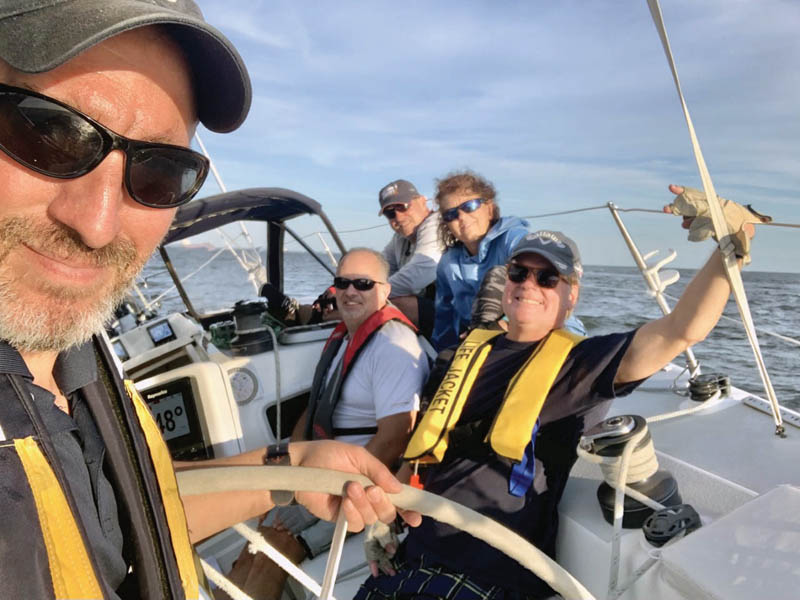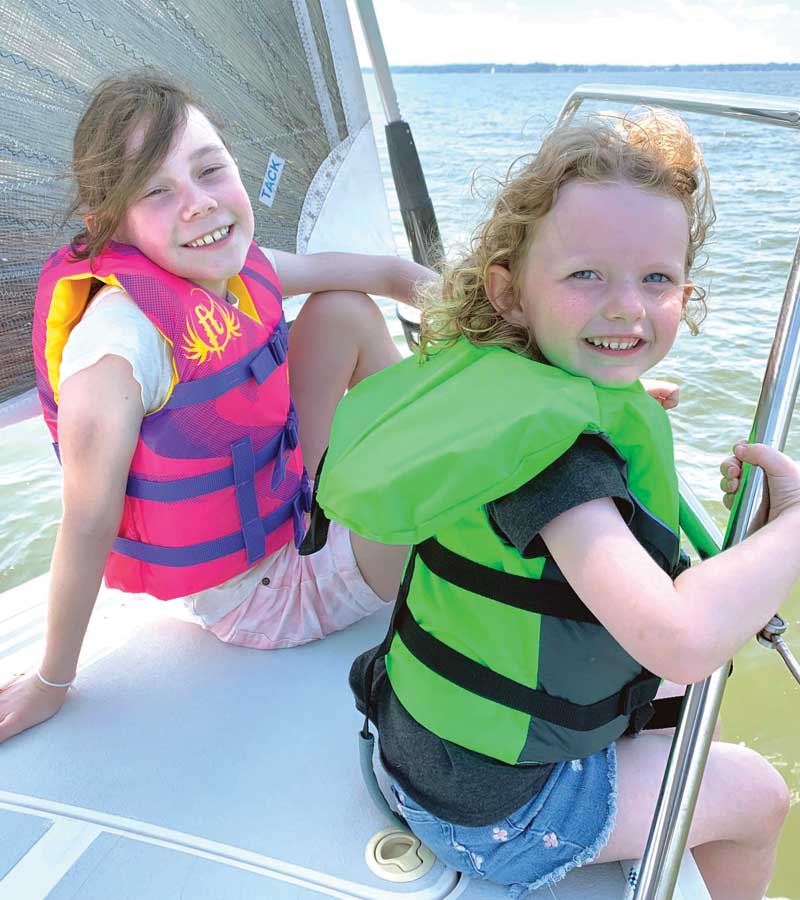Common Causes of Sailing and Boating Emergencies
With knowledge of some of the most common causes of of boating and sailing emergencies, you'll be better able to prepare for them and, hopefully, avoid them altogether.
At the height of the pandemic, it may come as no surprise that the increase in boating activity also caused an increase in boating accidents and fatalities. In June 2021, the US Coast Guard published the 2020 Recreational Boating Statistics, tracking recreational boating accident statistics for the 62nd consecutive year.
Alarmingly, the fatality rate rose a full 25 percent over the 2019 figures: 767 deaths and more than 3000 injuries as well as $62.5 million of property damage caused by recreational boating accidents. Drowning was the leading cause of death, accounting for three out of four fatalities that year, and of those, 86 percent were not wearing a personal floatation device (PFD).

Here are six of the most common causes of boating emergencies and how to avoid them and prepare for them. Special thanks to Ted Sensenbrenner, assistant director of boating safety, BoatUS Foundation, for his contributions to this content.
- Drowning: A PFD can save your life and the lives of your crew. Even in the most ideal conditions, things can go wrong. And no matter how safely you conduct yourself on your boat, there are always other boats around that might not be practicing safe boating. In Maryland, all passengers under the age of 13 must wear a PFD on any vessel under 21 feet that’s underway; in Virginia those under 13 must wear them on all vessels underway. As a captain, I always wear an inflatable PFD on my J/120 Hot Pepper.
- Lack of Safety Knowledge: More than three quarters of recreational boating fatalities occurred on boats where the captain had no formal safety instruction of any kind, according to the report. The US Coast Guard provides a list of nearly a dozen organizations that provide boating safety courses.
- Falling Overboard: The Coast Guard report ranks the top five types of accidents, such as collisions, grounding, and swamping. Falling overboard was the lowest on the list in terms of occurrences, but the highest of the five in terms of fatalities. Personally, I always make a point to review the ‘man overboard’ drill with my crew on Hot Pepper every time we prepare to leave the dock, especially with novice crew aboard. Just last May I rescued a solo sailor who fell overboard (November 2021 SpinSheet, page 34) and years ago an entire crew when their trimaran capsized in the middle of the night during a Governor’s Cup race.
- Operator Inattention: The Coast Guard names this as the number one contributing factor to recreational boating accidents in 2020, causing 383 injuries and 55 deaths that year. In October 2019, Hot Pepper struck a submerged channel marker (#10) on the South River near Quiet Waters Park, causing thousands of dollars in hull repairs and nearly breached the hull while I was dropping the mainsail under autohelm. Knowing your waters and navigational aids in advance can help you stay focused on your surroundings. Constantly scanning the water for other vessels, obstacles, hazards, and the weather can help avoid surprises out on the water.
- Alcohol: While alcohol use was only the seventh highest ranked primary contributing factor of accidents in 2020, it accounted for the most deaths that year and the highest fatality rate out of the number of accidents. Maryland had the fifth highest number of alcohol-related boating accidents that year. Drinking behind the wheel of a boat is no different than drinking behind the wheel of a car. In Maryland, boaters face up to a year in jail if convicted of operating a vessel under the influence of alcohol.
- Weather: The Coast Guard report ranks the weather as the second highest contributing factor to accidents aboard sailboats. Checking the forecast before leaving the dock and periodically while on the water can help anticipate any adverse weather conditions. Weather apps and alerts make it fast and easy to monitor conditions. Personally, I prefer using a weather radar map on my mobile device so that I can see exactly where bad weather is, where it came from, and where it’s heading. (Sign up for SpinSheet's three-part webinar, Marine Weather 101 - Chesapeake Bay, in March 2024 at this link).

Important topics for safety briefings
- Motion sickness: My rule on Hot Pepper is this: If you aren’t 100 percent certain you won’t get seasick, take a Dramamine an hour before boarding. Weekend chop from powerboat wake can be enough to turn any landlubber green, making an unpleasant experience for nearly anyone nearby. Better drowsy than queasy, I always say.
- Sunscreen: Even in cloudy weather. Remind your crew to apply and re-apply often.
- Hydration: Make sure that everyone has a refillable water bottle and there’s plenty of drinking water onboard.
- PFD usage: I always offer PFDs to all my crew over the age of 13, and require it for anyone under 13 or adults who can’t swim. I make a point to mention that there’s no shame in wearing a PFD, especially for non-swimmers aboard. Anyone who can’t swim must wear a PFD on the foredeck, as a safety rule on Hot Pepper. I also require PFD use with all crew during heavy wind and night racing.
- Boom: Mind the boom, especially on gybes/crash gybes. On last September’s race to Solomons, I stood up in the cockpit and hit my head on the boom so hard it caused bleeding. The boom is no joke, so make sure your crew understand how to avoid injury from the boom.
- Foot injury: I insist on having all crew wear closed-toe shoes at all times on Hot Pepper. All that deck hardware and rigging can cause serious damage to a snagged toe.
- Fire extinguishers: I always take the time to show my crew where all three fire extinguishers are located on the boat and how to properly use the PASS method—Pull the pin, Aim at the base of the fire, Squeeze the trigger, and Sweep left-to-right.
- Communication: Make sure at least one other crew member knows how to properly operate the VHF radio and how to hail the Coast Guard or other emergency services. Personally, I keep a waterproof VHF radio on my belt at all times so I can communicate with the boat and emergency services if I fall overboard. Current VHF radios have a “DSC” button which sends your vessel and location information to the Coast Guard if the device is registered with an MMSI number (Mobile Maritime Services Identification).
- Navigation and location: Show your crew where you are, where you’re going, how you’re getting there, and how to identify your boat’s location if you are not able to do so. Show them on a chartbook as well as on your chartplotter if you have one, and where to read the boat’s latitude and longitude to report to emergency services.
- Mobility: Make sure your crew knows how to stop the boat, drop sails, start the engine, and come get you if you’re the one who fell overboard.
- Man overboard: We review the MOB drill every time we go out on Hot Pepper, which includes yelling “Man Overboard!”, pointing to the person in the water until they’re back in the boat, dropping sails, starting the engine, and how to handle the LifeSling or horseshoe ring from the water.
Knowing the most common and most deadly hazards on the water in advance can help every captain and crew enjoy a safe, pleasant boating experience. Hopefully this list will serve as a useful reminder of safety concerns on the water for all readers.
by Captain Steven Toole
*** This article first appeared in the February 2022 SpinSheet. Find more safety articles here.




